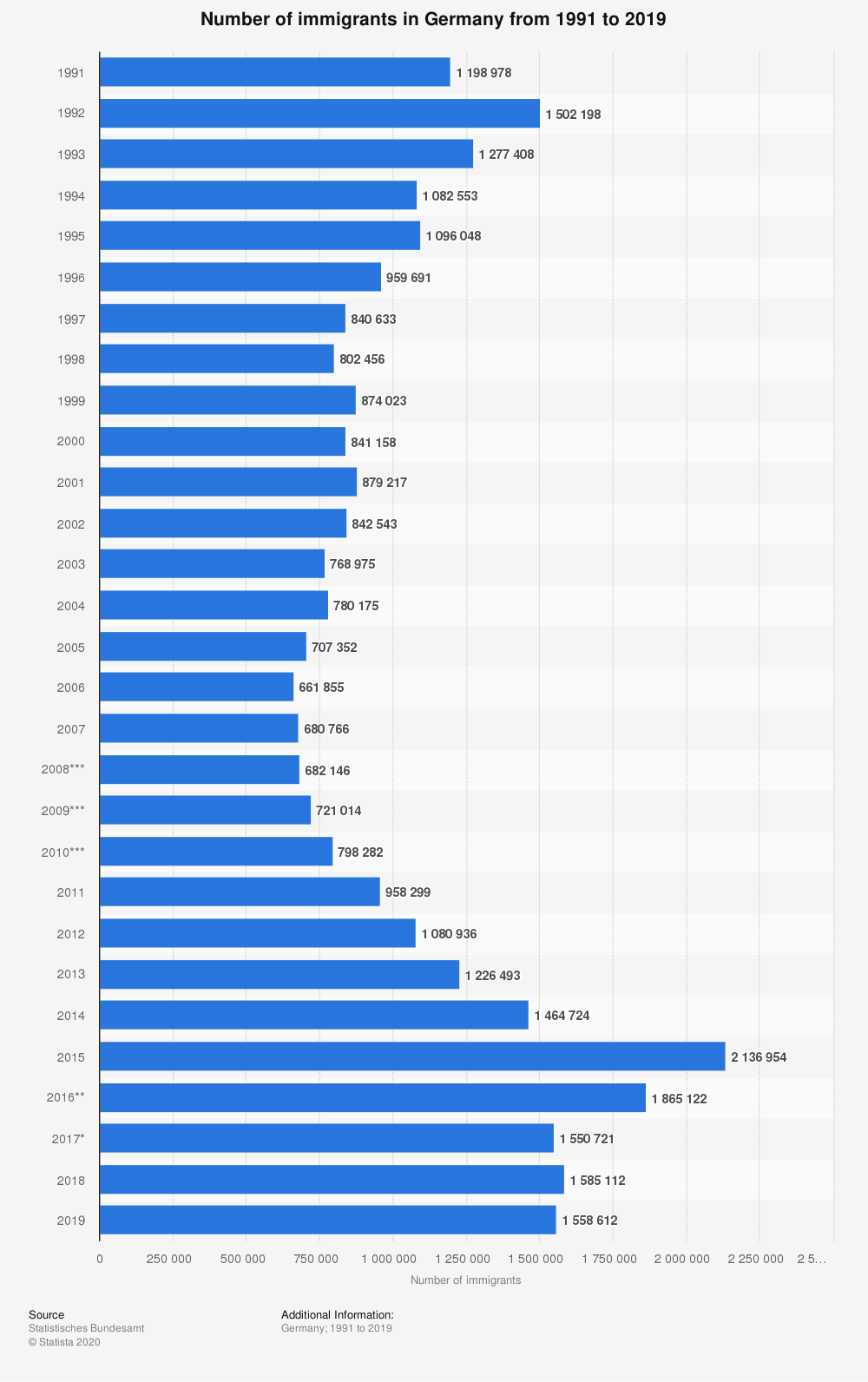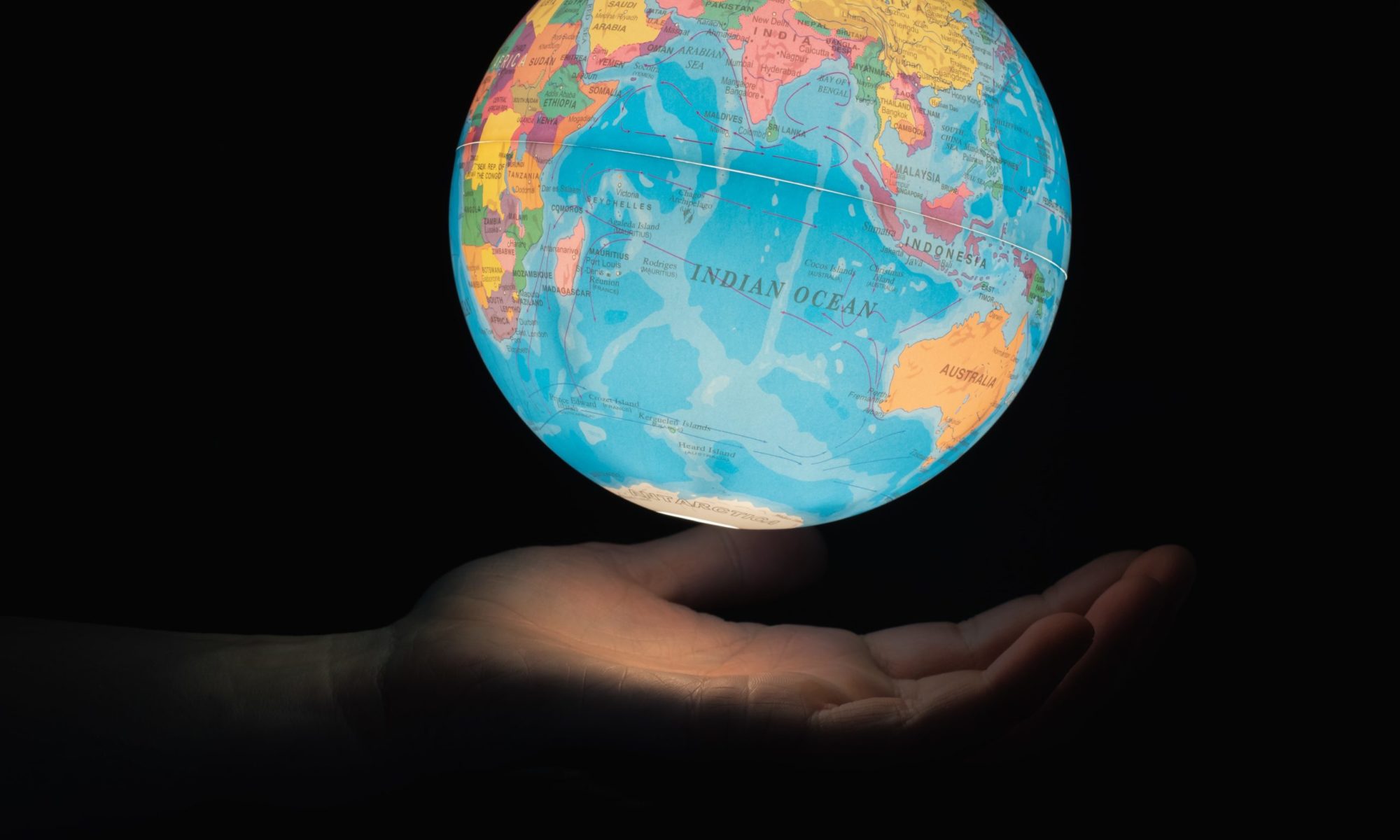
Graphic 1: Number of immigrants in Germany from 1991 to 2019 (BAMF 2020)
After World War II, Germany was divided into four occupational zones controlled by the US, Great Britain, France and the Soviet Union. Some 8 million refugees arrived in the Western-occupied zones and some 3.6 million people in the Soviet-occupied zone.
In the mid-1950s, due to labour shortage, the Federal Republic of Germany also began to recruit workers abroad. In 1955 the first recruitment contract was signed with Italy. Then came the Spanish, the Greek, the Turkish, the Moroccan, the Portuguese, the Tunisian, and the Yugoslavian. While the Berlin Wall was being built, there was an urgent need for foreign workers, recruited by the GDR. In total, there were approximately 14 million foreign workers who came to Germany.
The recruitment of so-called „guest workers“ was terminated due to the oil crisis and the increasing number of unemployment in 1973. Only almost 4 million foreigners stayed in Germany, while 11 million returned to their home countries.
At the beginning of the 1990s immigration had risen again due to the fall of the Berlin Wall, after the recruitment ban in 1973 and the low immigrant in the early and mid-1980s. Immigration reached its first climax in reunified Germany in 1992 with more than 1.5 million people immigrated to the Federal Republic of Germany. In 2008 and 2009, Germany was considered an emigration country.
In 2015, a total of 2.14 million people immigrated to Germany, and Syria was the main country of origin of new immigrants, whose number rose more than Romania and Poland. According to „Statistisches Bundesamt“ (2020), in 2019, there were 1.55 million arrivals to Germany.
References:
1. Seifert, Wolfgang. “Geschichte der Zuwanderung nach Deutschland nach 1950 | bpb.” bpb.de, https://www.bpb.de/politik/grundfragen/deutsche-verhaeltnisse-eine-sozialkunde/138012/geschichte-der-zuwanderung-nach-deutschland-nach-1950. Accessed 15 Dec. 2020.
2. Graphic 1: BAMF. (June 29, 2020). Number of immigrants in Germany from 1991 to 2019 [Graph]. In Statista. Retrieved December 19, 2020, from https://www.statista.com/statistics/894223/immigrant-numbers-germany/


